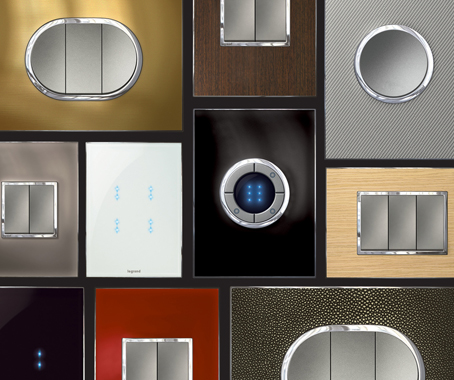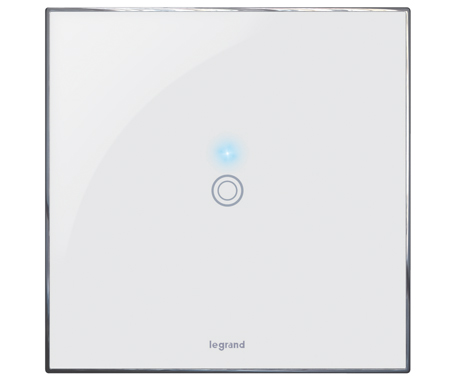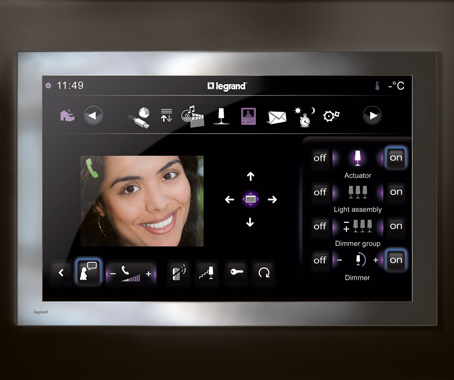Legrand provides products and systems for electrical installations and information networks for the domestic, commercial and industrial sectors.
December 24th, 2010
How did the company start?
Originally formed in Limoges, France, an area famous for porcelain, Legrand started making electrical accessories in the early 1900s when switches were then made of porcelain. Since then the company has expanded to become the world leader in switches and sockets, with a presence in more than 70 countries and a workforce of more than 35 000 people.

How would you describe your customers?
Legrand’s customers include architects, interior designers, electrical contractors, electrical specifiers, builders, and design conscious end-users – anyone involved in the selection of fittings and finishes for a building project.
What sets your company apart?
Design and technology are the two constructs that set Legrand apart from other electrical suppliers. With the new Arteor range, people will no longer see a switch as a switch, but as a piece of design. Technological innovation forms the vital link between increasingly sophisticated electrical components, ever more elaborate functionalities, and a user who expects increasingly simple access solutions.

What are your clients’ priorities at the moment?
This differs per our various customer groups: architects and interior designers seek more interesting aesthetic appeal and better quality finishes to suit trends in building design, paint colours and surfaces; installers are always seeking easier and faster installation methods; and end-users are focusing more on design, colour, texture and ease of use.
What is good design to you?
The optimum balance between function and form.

What does the future hold?
More complex functions will be hosted within each device to increase lifestyle convenience and energy-saving, as well as more choice in terms of shapes and finishes. As end-users continue to become increasingly design-focused, they will become more active in the choice of their electrical accessories – something previously left to electricians.
Legrand
legrand.com.au
INDESIGN is on instagram
Follow @indesignlive
A searchable and comprehensive guide for specifying leading products and their suppliers
Keep up to date with the latest and greatest from our industry BFF's!

In this candid interview, the culinary mastermind behind Singapore’s Nouri and Appetite talks about food as an act of human connection that transcends borders and accolades, the crucial role of technology in preserving its unifying power, and finding a kindred spirit in Gaggenau’s reverence for tradition and relentless pursuit of innovation.

Elevate any space with statement lighting to illuminate and inspire.

Within the intimate confines of compact living, where space is at a premium, efficiency is critical and dining out often trumps home cooking, Gaggenau’s 400 Series Culinary Drawer proves that limited space can, in fact, unlock unlimited culinary possibilities.

To honour Chef James Won’s appointment as Gaggenau’s first Malaysian Culinary Partner, we asked the gastronomic luminaire about parallels between Gaggenau’s ethos and his own practice, his multidimensional vision of Modern Malaysian – and how his early experiences of KFC’s accessible, bold flavours influenced his concept of fine dining.

Woods Bagot takes a people-centred approach to Plenary’s new Melbourne office, using place-making strategies more often seen in urban and landscape projects.

This office fitout in Brisbane’s CBD reflects the client’s innovative approach to business and philosophy of alternative thinking. Working for the aptly named Blue Sky Alternative Investments, Marc & Co was charged with transforming the 41st floor of 111 Eagle Street into a ‘workplace wonderland’, says interior designer Rachael Gwaro.
The internet never sleeps! Here's the stuff you might have missed

This fine-dining restaurant by Studio Dashline comprises a fluid layout that improves social interaction and the overall dining experience.

Winner of the 2025 RedDot Design Awards, the newly relaunched Flo monitor arm by Colebrook Bosson Saunders (CBS) brings refined ergonomics and effortless movement to the forefront of modern workspaces – proving that comfort and performance start at the desk.